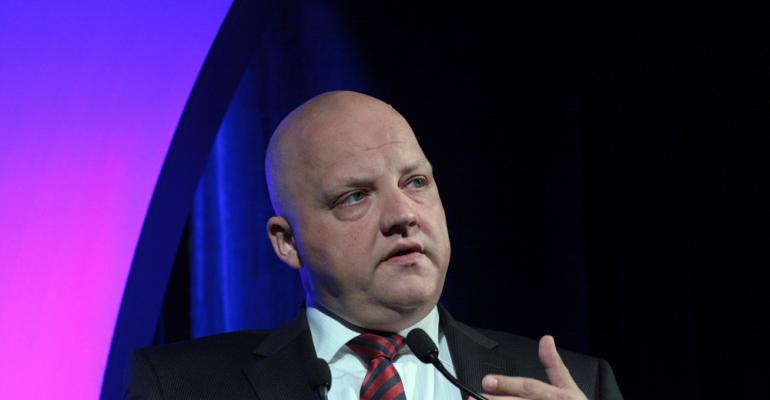TRAVERSE CITY, MI – Volkswagen is ramping up to release three new engine lines in the U.S. in the coming model years, as it seeks to streamline powertrain production across all of its brands.
The EA 211, EA 888 and EA 288 have been in production in Europe and Asia since spring 2012.
The EA 211 arrives here first, when the Jetta Hybrid goes on sale in the year’s fourth-quarter, says Oliver Schmidt, general manager-engineering and environmental office at Volkswagen Group of America.
The EA 888, or “Triple 8,” comes in 2013 with 2.0L TSI Volkswagen and Audi powertrains, and later with 1.8L TSI ’14 models. The EA 288, a diesel powertrain, also arrives in the ’14 model year in the successor to the Audi A3.
Powertrain production is simpler, but there will be less overlap among vehicles under the auto maker’s portfolio of brands. “In the past, we had some dilution with the brands. The new platform helps us to diversify the brands,” Schmidt tells WardsAuto.
The three engine lines cover 82% of Volkswagen’s product. U.S. versions of the Triple 8 will be built at a new $300 million factory in Silao, Mexico, where some pre-production units already have rolled off the line.
“All three engines are getting makeovers,” Schmidt says during a presentation at the Center for Automotive Research’s Management Briefing Seminars here.
Each powertrain has a compact architecture for short overhang in the vehicle. Cast-iron blocks have been replaced with aluminum to reduce engine weight 20%, and carbon-dioxide emissions have been cut 20%.
Most critical, Schmidt says, is compliance with future emissions regulations in all markets, a challenge to auto makers seeking identical production processes while globalizing.
VW has redesigned its engines so that the exhaust comes from the rear-facing side of the block, streamlining exhaust flow. An integrated exhaust manifold helps the engine heat up faster, lessening emissions and improving fuel economy at top speeds. “On the German autobahn, this is quite important,” Schmidt jokes.
Four-cylinder engines have cylinder-deactivation technology, which is expected to be a fuel saver, he says.
To further reduce energy consumption, the engines have an air-to-water intercooler integrated into the intake manifold, which reduces the volume of air and regulates cooling and heating performance. It also prevents ice buildup in cold climates, Schmidt says.
The U.S. is one of VW’s smaller markets in terms of sales, which is why the region is getting the technology after Europe and Asia. “If you look at Volkswagen sales worldwide, we have 8 million cars and only 500,000 in the U.S.,” Schmidt tells WardsAuto.
Usually there is a 3-month gap between introducing a product in Europe and bringing it to the U.S., he says, but VW wants to make sure each of its engine lines were fully optimized for U.S. standards, hence the longer wait time.





